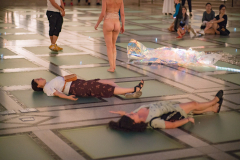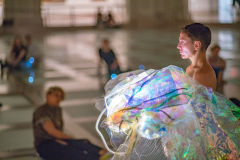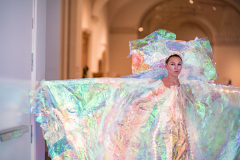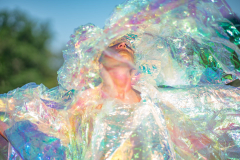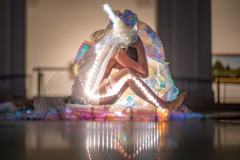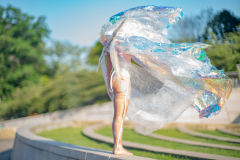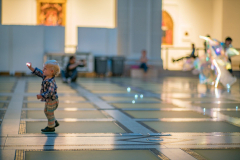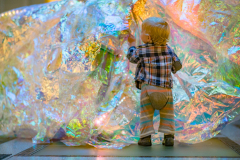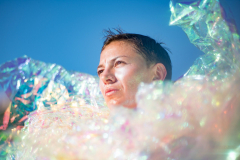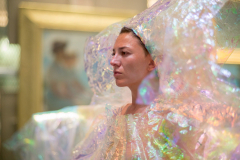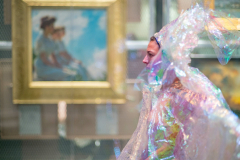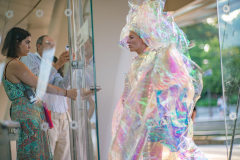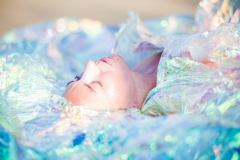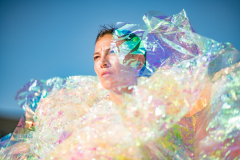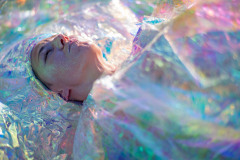Arantxa Araujo
Hábito: DAR a Luz responds to Martha Araujo’s Hábito/Habitante (no relation to artist), where performers interact with massive forms of cloth, creating a movement-based dialogue between their bodies, the public, and the museum space. By carefully training her body to carry and transmit energy, Araujo will give light (DAR a Luz) to a complex circuit worn as a suit – alluding to women’s creative quality to give birth. In this action, the artist investigates the role of women in a moving meditation in relation to herself and those around her, and in shedding light uses determination and knowledge to overcome challenge. “In building the habit, and preparing for the performance, I have found clarity in terms of the beauty and risk/difficulty that giving light entails – that to me represents the reality of women in Latin America. I know that having a battery and microcontroller inside your body is dangerous, but so is being a woman in Latin America. From a place of acknowledgment, I am taking all the actions to be safe and present the female body as a source of enlightenment and community following in the footsteps of generations that came before me,” said Araujo. The performance will include a journey through the relativity of time as the body deteriorates, investigating ideas of resistance, persistence, and perseverance, as well as breaking free from the norms of society.
Cuerpxs Radicales: Radical Bodies in Performances presents new and recent work by contemporary Latinx artists as they respond to themes in our exhibition Radical Women: Latin American Art, 1960–1985. The three-day series Cuerpxs Radicales (taking place July 5, 12, and 19) curated by Marlene Ramirez-Cancio and Lauren Zelaya showcases female-identified and gender-nonconforming Latinx artists in the greater NYC area who are exploding rigid notions of femininity. Featuring performance, visual art, literature, music, and everything in between, it centers a younger generation engaging with our current political and cultural landscape. Presented in partnership with NYU’s Hemispheric Institute of Performance and Politics.
